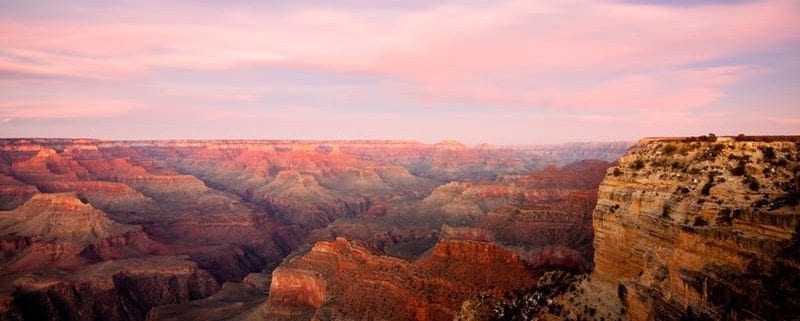Grand Canyon Things to Do | Driving Trips
Traversing the myriad of trails on foot and descending the steep cliffs on a mule are exciting ways to experience the Grand Canyon. Embarking on a 215-mile, five-hour journey from rim to rim in a car is memorable, too.
Grand Canyon Village
An ideal starting point for your Grand Canyon driving adventure is Grand Canyon Village. Situated in Grand Canyon National Park, the village is the center of activity and the transportation hub of the South Rim. It serves as only place where the railroad reaches the canyon’s rim.
Desert View Drive
Your trip continues east along Desert View Drive, which provides numerous vantage points of the canyon. Grand Canyon National Park’s only scenic road open to cars year-round, Desert View Drive meanders for 25 miles from Desert View, which is located inside the park’s east entrance, to Grand Canyon Village, which is the commercial center of the park.
Desert View Drive features a myriad of viewpoints and numerous picnic areas. Much of this drive passes through forests. Canyon views here are limited, but spots where the canyon is visible are breathtaking. They are actually among the best vantage points in the park.
Desert View Watchtower
Built in 1932, Desert View Watchtower is a must-see spot to gaze at the canyon. Architect Mary Elizabeth Jane Colter, who designed many of the park’s historic structures, created the watchtower to resemble the prehistoric towers that dot the Southwestern landscape.
Cameron Indian Trading Post
The drive heads past Cameron Trading Post, which is located a mile north of the Arizona 64 and U.S. 89 highway junction.
The original stone trading post, located in a historic building, houses a gallery of Indian artifacts, clothing, and jewelry. The main trading post is in a more modern building and serves as the largest trading post in northern Arizona. Cameron Trading Post also boasts a hotel, a restaurant and a market.
Established in 1916, the Cameron Indian Trading Post is a showplace for fine Native American art and Southwest art. The trading post’s gallery, adorned with unique Native American Indian decor, contains some of the finest Native American Indian art in the Southwest. Navajo rugs, Hopi kachinas, and Pueblo pottery are among the offerings.
Driving north from Cameron, the colors of the Painted Desert glow. At the Tuba City junction, dinosaur tracks are visible five miles east on U.S. 160.
Echo Cliffs, Navajo Bridge and Colorado River
Continuing north on U.S. 89 through Navajo territory, Echo Cliffs rise high in the east before you turn onto U.S. 89A and dip down to Navajo Bridge that spans the Colorado River and offers a view of Marble Canyon.
Around five miles north, Lees Ferry and Lonely Dell Ranch offer more history lessons and provide a glimpse of Glen Canyon.
From this point, the roadway then skirts the base of Vermilion Cliffs before climbing to the pine-forested Kaibab Plateau.
Turn south at Jacob Lake – which has a lodge, campground, RV park, restaurant and visitor center – for a 45-mile drive through a forest and a meadow en route for Bright Angel Point on the North Rim.
To learn more about the Grand Canyon, make plans to see the Visitor Center, which is located at the south rim entrance of Grand Canyon National Park. The visitor center serves as a destination and a resource for the most comprehensive selection of information about Grand Canyon area hotels, tours, attractions, restaurants and sightseeing and outdoor activities.




